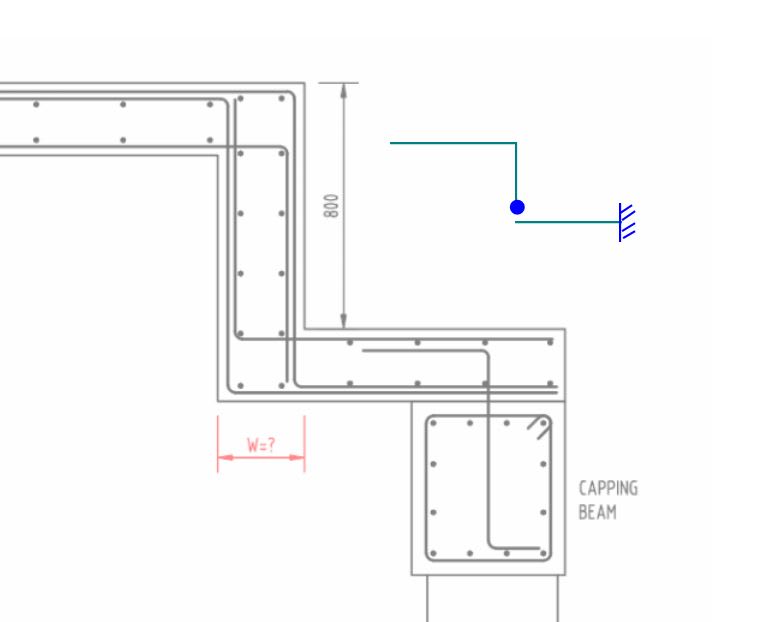Navigation
Install the app
How to install the app on iOS
Follow along with the video below to see how to install our site as a web app on your home screen.
Note: This feature may not be available in some browsers.
More options
Style variation
-
Congratulations cowski on being selected by the Eng-Tips community for having the most helpful posts in the forums last week. Way to Go!
You are using an out of date browser. It may not display this or other websites correctly.
You should upgrade or use an alternative browser.
You should upgrade or use an alternative browser.
Step down in slab detail
- Thread starter ENG_33
- Start date
- Status
- Not open for further replies.
There has been some good discussion regarding this.
- Thread starter
- #3
Thank you. I have checked the links you provided as well as the paper for large steps. However I believe that the 800mm step I have here is way too large compared to the 250mm steps in that paper although it is near the support instead of mid span. Is tie model mentioned in the links is applicable to my case?
ENG 33 said:However I believe that the 800mm step I have here is way too large compared to the 250mm steps in that paper although it is near the support instead of mid span. Is tie model mentioned in the links is applicable to my case?
I disagree. Much of the theory discussed in those thread will still be valid for your situation, particularly the strut and tie models.
ENG 33 said:Can anyone tell me how wide the soffit has to be for step downs in one way RC slab and why?
The rule of thumb that I was taught was to make [w] twice the dimension of the overall step height. As for the why, that was discussed extensively in those other threads. In short, the goal is to provide enough space to smooth out stress concentrations around the corners, particularly rebar bond stresses.
ENG 33 said:Also do you see any issue with the connection below?
1) I suspect that the dimension [w] is too small as discussed above.
2) You've got a tendency towards unrestrained bursting as shown in the sketch below.
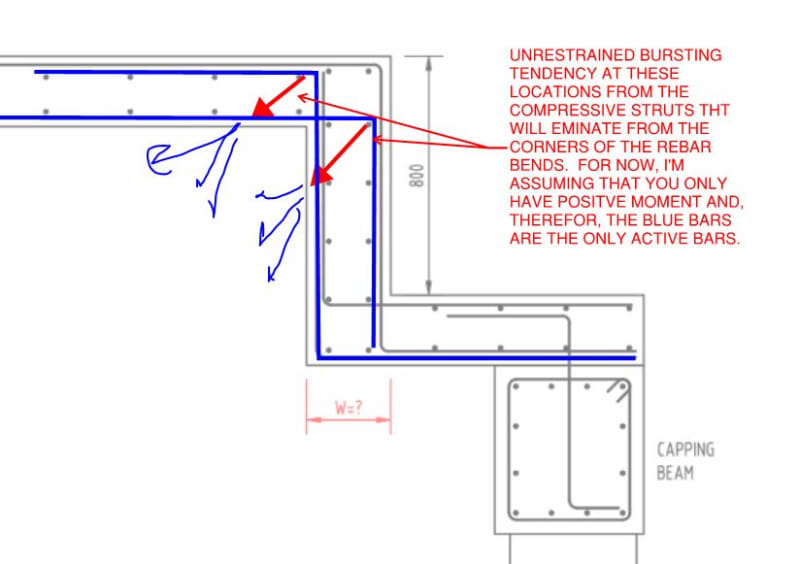
- Thread starter
- #6
Thank you Kootk!
The below replies are based on positive moment assumption.
I used strut-tie model but I got the tension tie as below instead of strut. Can you explain the unstrained bursting from strut in more details? Thanks.
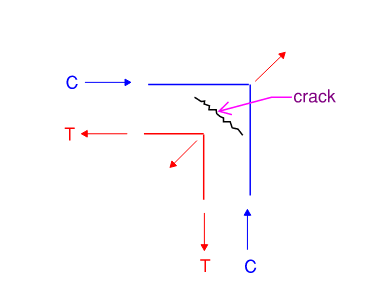
The paper also mentions that the below below supplementary reo in step has the best performance in both strength and displacement.
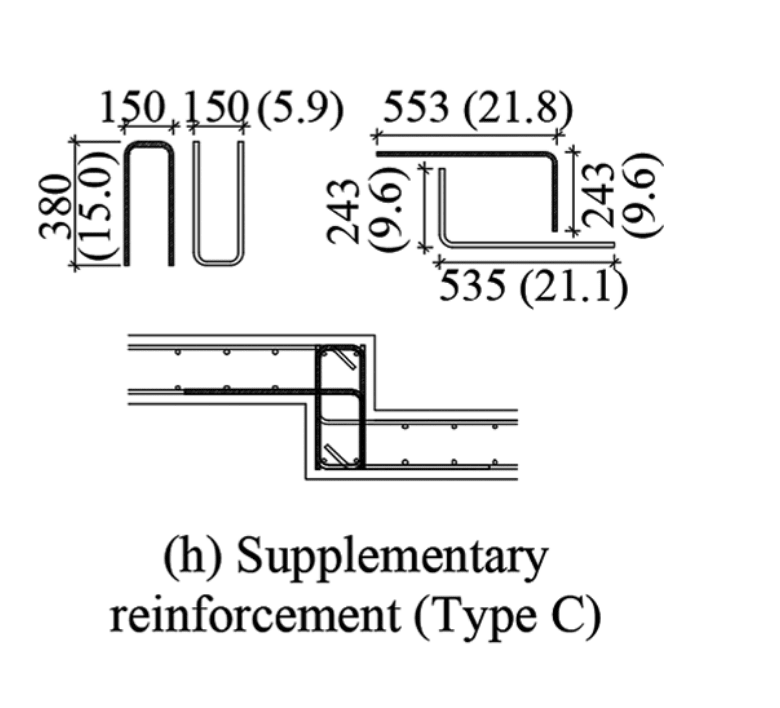
The U & inverted U bars are used to take the diagonal tension shown above. But I wonder with the detail I made in the very first pic I uploaded in the thread, can these vertical bars (with lap anchorage) work as U & inverted U bars to resist diagonal tension instead of adding additional U bars?

Also, if the main bars extend and lap like I detailed, are these additional L & inverted L bars necessary? Looks like the they extended and lapped the main bars and provided L bars too in their tests.
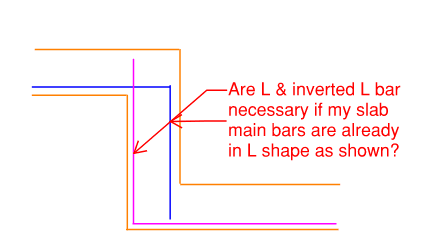
The below replies are based on positive moment assumption.
I have seen 1.5D or 2D from many firms too but wondering if this is specified in any standards? I was looking at the paper "one way slab with large steps" mentioned in the reference that Manitou90 provided and they tested increased step thickness 'W' specimens and came to a conclusion from the results that "It is not possible to have the same maximum moment strength as that of flat one-way slabs by simply increasing the thickness of the step". The results also show that it doesn't increase the displacement capacity too compared to the smaller step thickness. I wonder if I really need 1.5D or 2D here because it means I will have 1.6m wide step, which will add more loads.The rule of thumb that I was taught was to make [w said:twice the dimension of the overall step height]
I used strut-tie model but I got the tension tie as below instead of strut. Can you explain the unstrained bursting from strut in more details? Thanks.

The paper also mentions that the below below supplementary reo in step has the best performance in both strength and displacement.

The U & inverted U bars are used to take the diagonal tension shown above. But I wonder with the detail I made in the very first pic I uploaded in the thread, can these vertical bars (with lap anchorage) work as U & inverted U bars to resist diagonal tension instead of adding additional U bars?

Also, if the main bars extend and lap like I detailed, are these additional L & inverted L bars necessary? Looks like the they extended and lapped the main bars and provided L bars too in their tests.

- Thread starter
- #7
- Status
- Not open for further replies.
Similar threads
- Replies
- 11
- Views
- 10K
- Replies
- 2
- Views
- 3K
- Replies
- 2
- Views
- 2K
- Replies
- 6
- Views
- 2K



